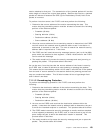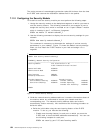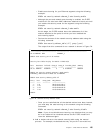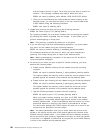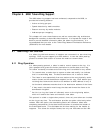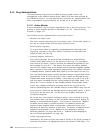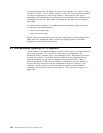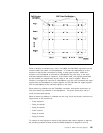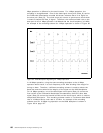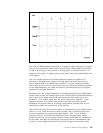ring purge process may be triggered after detecting the loss of a token,
frame, or errors caused by adapter-insertion or adapter-removal operations.
To purge the ring, the active monitor initiates a
Ring Purge MAC frame
broadcast and starts the Ring-purge timer. If the
Ring Purge MAC frame
has
not returned to the active monitor when the timer expires, the
token-claiming
process is initiated.
8.1.2.2 Token-Claiming Process
This process is used to elect a new active monitor. Any station who suspects
the active monitor is absent can activate this process.
During the process, a
Claim Token MAC frame
is broadcast at a defined interval
and the ring station who manages to capture three of its own
Claim Token MAC
frames will be appointed the active monitor.
8.1.3 Ring Errors
In the event of errors or faults, the token-passing protocol has built-in features to
automatically reconfigure the ring to identify and bypass the fault and resume
operation. This is an advantage over the CSMA/CD protocol.
Each ring station is capable of detecting and reporting any occurrences of errors
or faults. Errors can be classified into the following categories:
•
Hard error
Hard errors are permanent faults that stop all normal traffic on the ring.
They are usually first detected at the receive side of the next active
downstream station from the fault. That ring station will immediately
transmit a
Beacon MAC frame
to alert every station. It continues to transmit
Beacon MAC frames
at a specified time interval until its input signal is
restored or until it removes itself from the ring.
•
Soft error
Soft errors are defined as intermittent faults that temporarily disrupt normal
ring operation. Each station maintains a set of counters to keep track of soft
error occurrences. The values of the soft error counters are sent in the form
of a
Soft Error Report MAC frame
to the Ring Error Monitor station (for
example, Bridge or LAN Manager station) at two-second intervals.
•
Isolating error
Isolating errors are identified because the fault domain is known. A fault
domain is the physical section of the segment bounded by two adapter MAC
addresses. A beacon is an example of an isolating error.
•
Non-isolating error
Non-isolating errors exist where the fault domain cannot be identified. The
origin of these errors cannot be located. A Frame-copied error is an
example of a non-isolating error.
Chapter 8. 8260 Token-Ring Support 131



